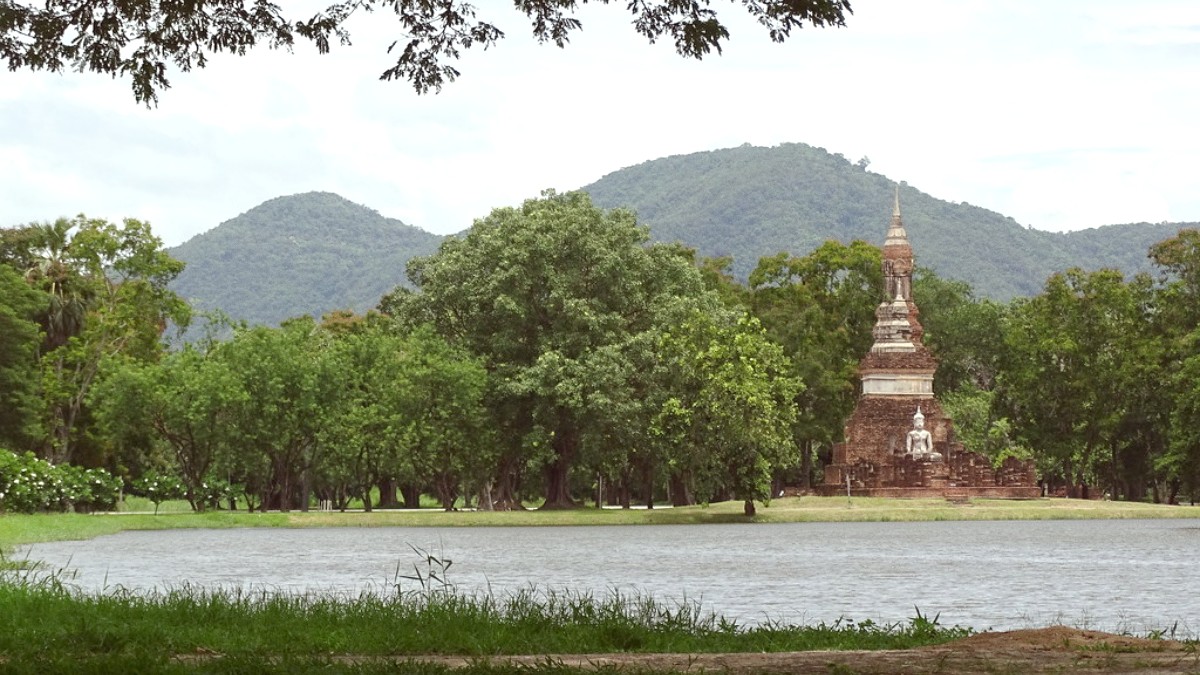
The Ancient Cities, Sri Lanka
Temperatures stay warm year-round, typically from 26°C (79°F) to 30°C (86°F), with little seasonal variation. Humidity generally stays around 80%.
The North-East Monsoon brings the heaviest rainfall from October to January. A smaller inter-monsoonal rain period brings short showers in April and May.
December to March offers the most comfortable weather for extensive walking and cycling among the ruins. The cooler temperatures make long hours outdoors pleasant.
A good Travel tripod helps capture stunning low-light shots at dawn or dusk, especially of the large dagobas.
October-January
Significant rainfall common, potential waterlogging in some areas.
Plan indoor activities or seek shelter during heavy downpours.
April-May
Can be very hot and humid, making daytime exploration tiring.
Consider a Portable handheld fan and schedule activities for cooler hours.
December-March
Driest weather, lower humidity, comfortable for extended outdoor visits.
Book accommodation and tours well in advance due to high demand.
Most nationalities acquire an ETA for short visits to Sri Lanka (tourism, transit, short business trips). Apply online via the official Sri Lankan ETA website (IVisa or VisaHQ offer consumer services).
Your passport must be valid for at least six months beyond your expected departure. Carry proof of a confirmed return or onward flight ticket. You may show evidence of adequate funds. Have a copy of your ETA approval notice.
A tourist ETA typically grants a 30-day stay from arrival, with a double entry facility.
Approximately US$50 for most nationalities (as of early 2024). Confirm the exact fee on the official ETA website.
Present passport, printed ETA approval, and completed disembarkation card at immigration.
Advisable to carry a few Passport-sized photos for unforeseen circumstances.
No specific additional permits are needed for the ancient city beyond the main site ticket.
Sri Lanka caters to various travel styles, from budget-conscious explorers to those seeking luxury. The local currency is the Sri Lankan Rupee (LKR).
Major currencies (USD, EUR, GBP) exchange at Bandaranaike International Airport (CMB) or at banks/authorized money changers in larger towns. ATMs are available in Anuradhapura's new town.
Prices vary based on travel style and comfort level, with options from guesthouses to luxury resorts.
The Anuradhapura Ancient City Complex ticket for foreigners is approximately US$25 (around 9,000 LKR).
Yellow Fever certificate for arrivals/transits from risk countries.
Drink sealed Bottled water only. Avoid uncooked food or unpeeled fruits from questionable sources. Carry Diarrhea relief medication.
Use Insect repellent with DEET or picaridin. Wear long sleeves and pants, especially at dawn and dusk. Consider a Mosquito net for some accommodations.
Sunburn and Heatstroke:
The tropical sun is strong. Use High-SPF sunscreen, wear a Wide-brimmed hat, and hydrate with plenty of water.
Avoid prolonged sun exposure during peak hours (10 AM to 4 PM).
Tap water is not safe to drink. Opt for sealed bottled water or a Filtered water bottle if a safe refilling source is available.
Anuradhapura has a Teaching Hospital and private clinics. For serious cases, transfer to Colombo may be necessary.
Available in the new town for common medications.
A Comprehensive policy is highly recommended, covering medical emergencies, evacuation, trip cancellation, and lost luggage. Consider World Nomads or SafetyWing. For US visitors, Insubuy also offers options.
Anuradhapura is generally safe for tourists. Petty crime can occur in crowded areas.
Exercise caution with street food. Opt for vendors with high customer turnover and visible hygiene practices. Enjoying hot, freshly cooked food generally has less risk.
Rice and curry shops offer authentic and inexpensive meals.
Hot, cooked dishes minimize risk compared to cold items.
Look for popular spots with a continuous flow of customers.